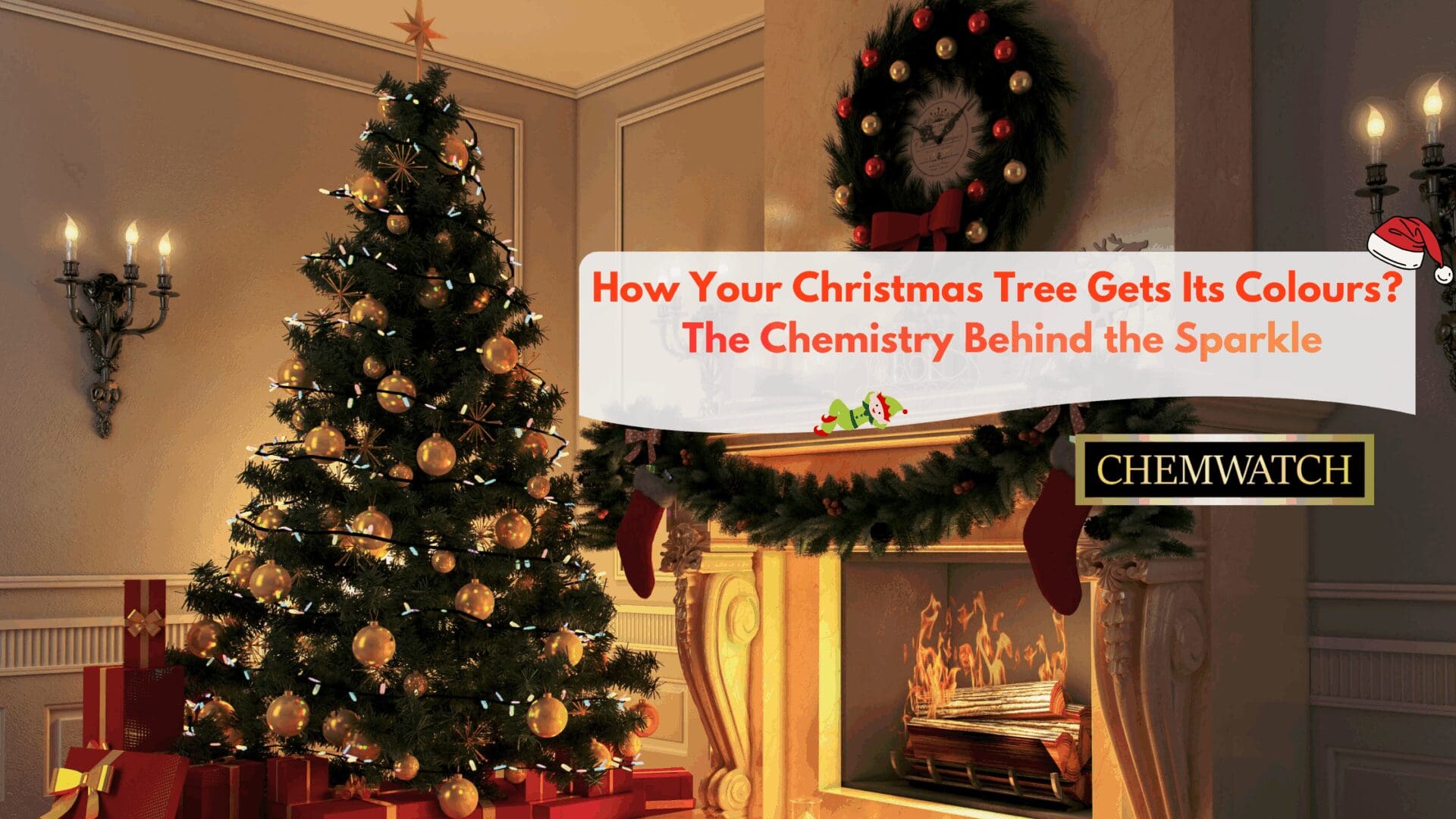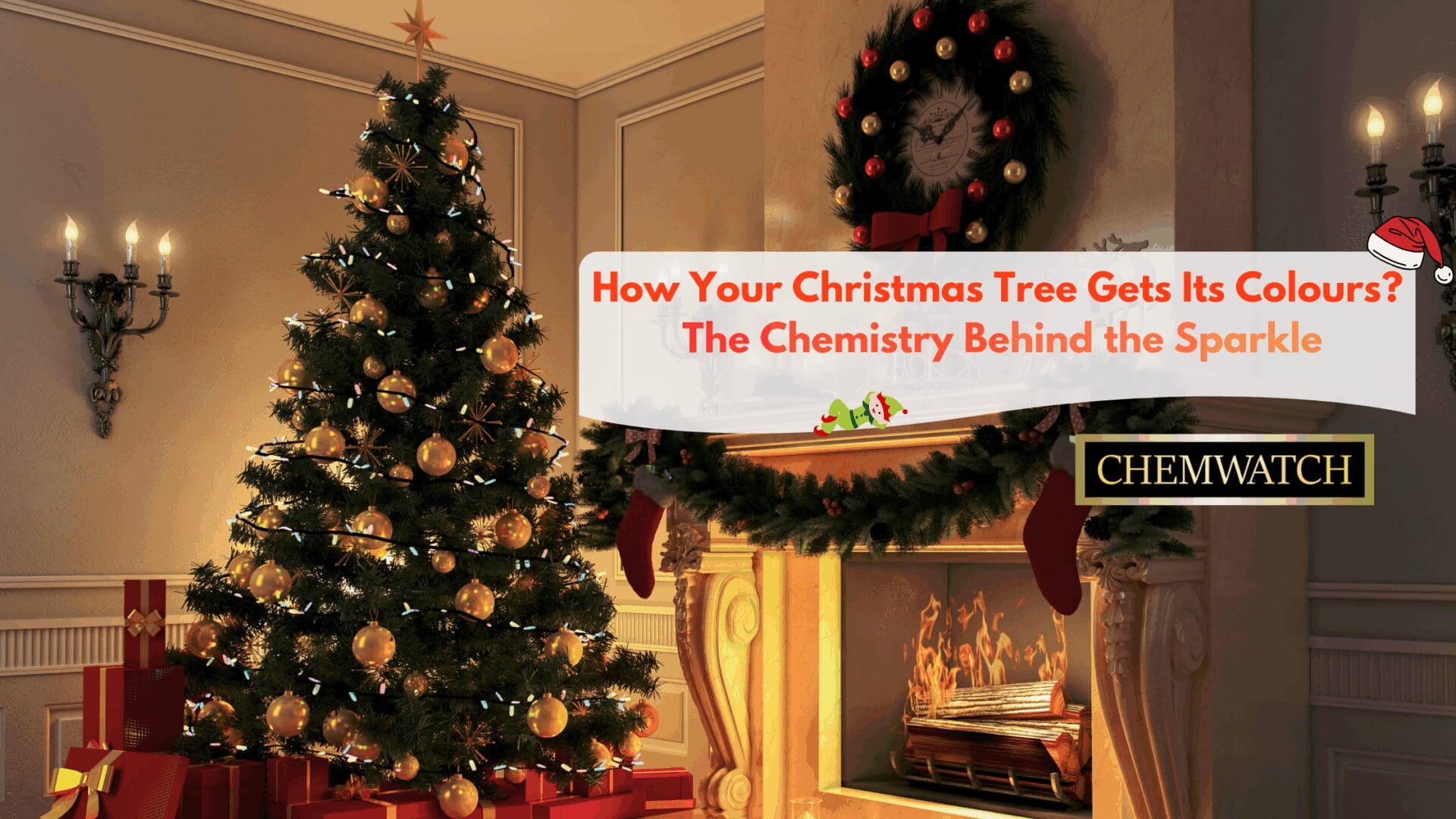
As the festive season rolls around, millions of homes, shopping centres, and city streets begin to shimmer, all thanks to one unmistakable centrepiece: the Christmas tree. Whether dressed in classic snowy whites, elegant metallic sheens, or vibrant, bold dyed colors, the seasonal glow is ubiquitous. But, has anyone ever thought that the stunning transformation of an ordinary evergreen- be it a real pine or a meticulously crafted artificial one is a masterful demonstration of chemistry at work.

Behind those glittering ornaments, bright needles, and colour-washed branches is a mix of pigments, polymers, and chemical reactions designed to transform an ordinary tree into a holiday centrepiece. But as magical as these colours appear, they also come with environmental and health considerations many people don’t realise.
Let’s unwrap the science behind Christmas tree colours and explore what they mean for our environment.
Most Christmas trees don’t naturally shine in neon greens or frost-tipped whites, that’s chemistry at work. Even real trees are often colour-enhanced before reaching stores.
Here’s how both artificial and real Christmas trees get their festive hues:
1. Artificial Trees: Polymer Chemistry at Its Festive Finest
Artificial trees are commonly made from PVC (polyvinyl chloride), a plastic derived from vinyl chloride monomers. In its natural state, PVC is a dull, greyish material. To create the vibrant look of faux foliage, manufacturers blend in plasticisers, stabilisers, and pigments.
Common pigments used in artificial Christmas trees include:
These pigments bond with the PVC polymer matrix during manufacturing, creating durable, needle-like strips that mimic natural branches.
2. Coloured Sprays and Flocked Trees
Love the look of snow-covered Christmas trees? That frosty “snowy” finish comes from flocking, a process where the tree is sprayed with a mixture of:
Some inexpensive flocking sprays use solvents like acetone or methylene chloride to improve adhesion. These chemicals can release fumes that pose health risks when inhaled, especially in poorly ventilated spaces.
3. Real Trees: Dyed for “Freshness”
Surprisingly, many real Christmas trees are also colour-treated to appear freshly cut and lush. Growers may spray the trees with a green dye solution, which typically includes:
These dyes help trees maintain their appeal throughout the selling season, but they also introduce additional chemicals into the environment. Let’s look at the chemical reactions that take place in making Christmas trees look beautiful and shiny.
The colour on a Christmas tree isn’t just a surface-level finish; it’s held in place by chemical reactions that make the tree look vibrant and shiny.
PVC + Pigments: A Thermal Bond
To produce artificial needles, PVC is heated until soft, then mixed with pigments and extruded. Pigments integrate into the polymer backbone through van der Waals interactions and mechanical entrapment, allowing the colour to stay bright for years.
Metallic ornaments and tinsel often use aluminium flakes, mica, or metal oxide-coated particles. These materials reflect and refract light, creating that signature holiday shimmer.
The Chemistry of Glitter
Most glitter is made from PET plastic coated with:
Small polymers infused with metal create the “rainbow sparkle” effect through thin-film interference - the same phenomenon behind soap bubbles and peacock feathers.
We all love decorating for Christmas, but most of us don’t think about the environmental cost behind those vibrant colours. They may look magical, but their impact isn’t. Here are some of the ways they affect the environment:
1. PVC: A Persistent Plastic
Artificial PVC trees do not biodegrade. When discarded, they may release:
A typical artificial tree can take 400+ years to decompose.
2. Glitter: Tiny but Troublesome
Glitter is a form of microplastic. Once it enters waterways, it is nearly impossible to remove. A single flocked or decorated tree can shed thousands of particles each holiday season.
3. Coloured Sprays and Flocking
Flocking mixtures can contain:
Freshly flocked trees can off-gas VOCs, contributing to indoor air pollution.
4. Dyed Real Trees
Dyes used on real trees often fail to biodegrade. They may:
This makes disposal more environmentally harmful than many expect.
Chemists and manufacturers are developing safer, more sustainable alternatives, such as:
Sustainable chemistry may soon make the holidays sparkle with far less environmental impact.
Final Thoughts
The colours on your Christmas tree might look enchanting, but there are chemical and environmental implications behind the sparkle. Whether you prefer real or artificial trees, knowing how those colours are created can help you celebrate more sustainably.
Sources